Abstract
In vitro measurements were made of Na+ and Cl- isotopic fluxes across the tracheal epithelium of mature fetal lambs (130-143 days gestation), new-born lambs (up to 41 days of age) and adult sheep under conditions of continuous short circuiting. The effects of a variety of drugs were examined, but only in the case of amiloride and isoprenaline were observations made in all three groups. Experiments designed to elucidate the mechanism of basal Cl- secretion were performed in adult trachea only. Under resting conditions the net flux of Na+ from lumen to submucosa exceeds that of Cl- in the reverse direction in fetal and adult trachea. In the new-born the two fluxes are more or less equivalent in magnitude. In none of the three groups is the sum of ion fluxes significantly different from the short-circuit current (Isc). Removal of Na+ from, or addition of furosemide (10(-3) M) to, the solution bathing the submucosal surface of adult trachea has the effect of reducing Isc by an amount which approximates to the Cl- current (29%). At a concentration of 10(-4) M on the submucosal side of adult trachea, ouabain causes potential difference and Isc to fall to zero within 70 min of addition to the bathing solution. Nevertheless, there remains a significant net Na+ flux from submucosa to lumen. The addition of isoprenaline (10(-4) M) to the medium bathing the submucosal surface of both fetal and adult trachea causes an increase in the one-way flux of Cl- from submucosa to lumen with consequent increase in net Cl- flux towards the lumen. (The Na+ fluxes are unchanged.) However, in the adult the Cl- secretory response to isoprenaline is very much less and is not accompanied by an increase in electrical conductance. As judged by the change in Isc, all the post-natal fall in beta-agonist responsiveness takes place within the 3 week period following birth. Whereas, in the fetus, the effect of luminally applied amiloride on the Na+ fluxes is negligible, in the adult the one-way flux of Na+ from lumen to submucosa is reduced by 35% with a consequent 60% fall in net Na+ flux towards the submucosa.(ABSTRACT TRUNCATED AT 400 WORDS)
Full text
PDF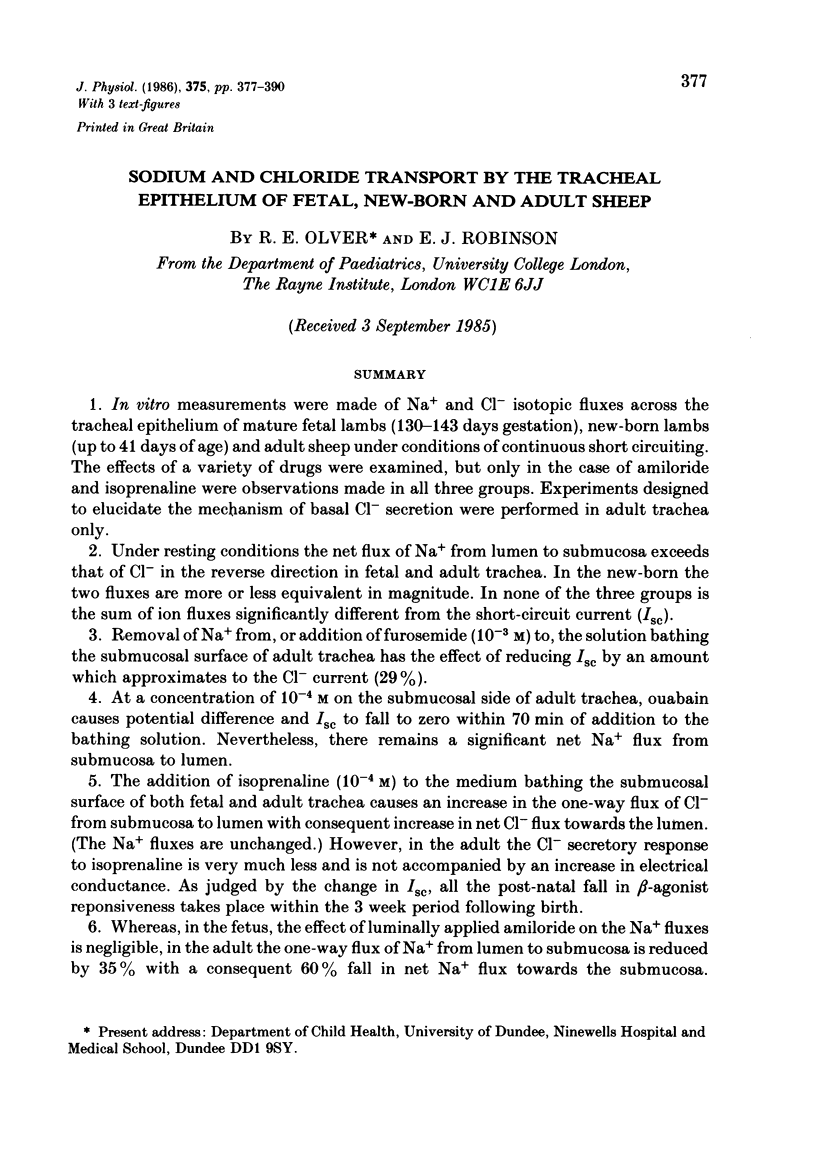
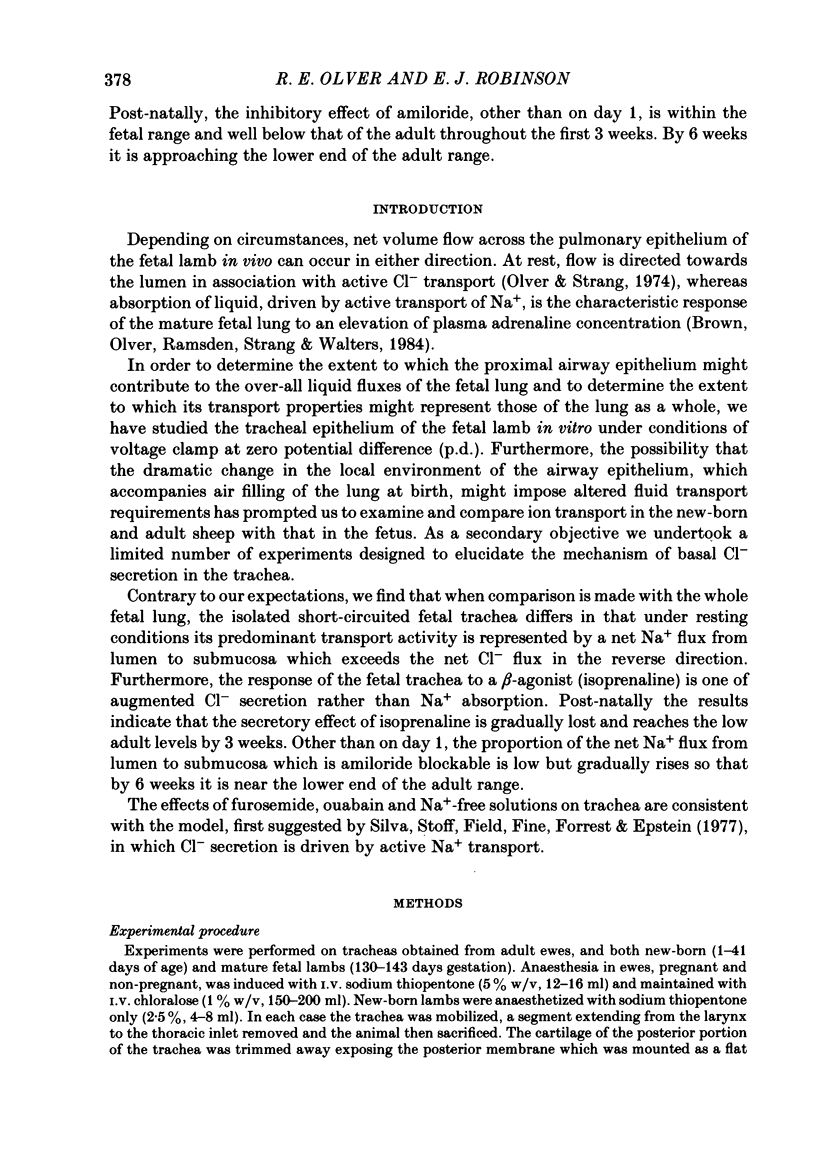
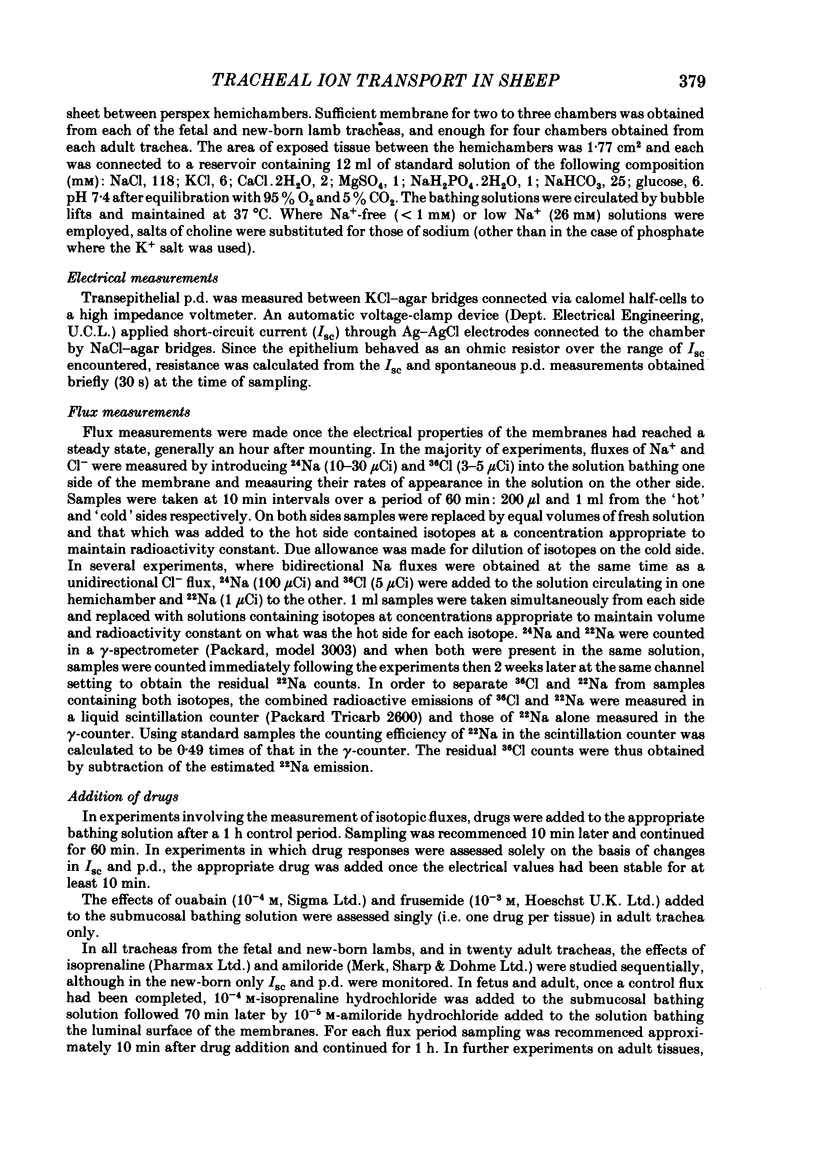
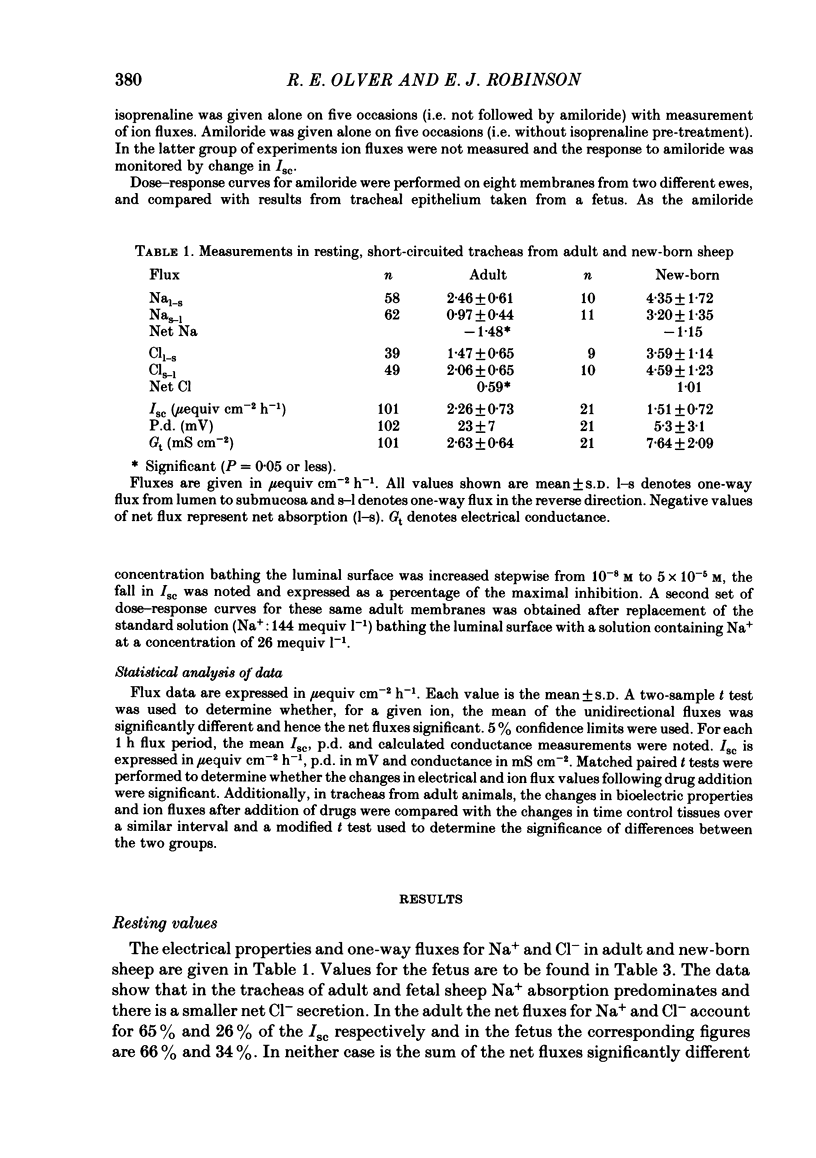
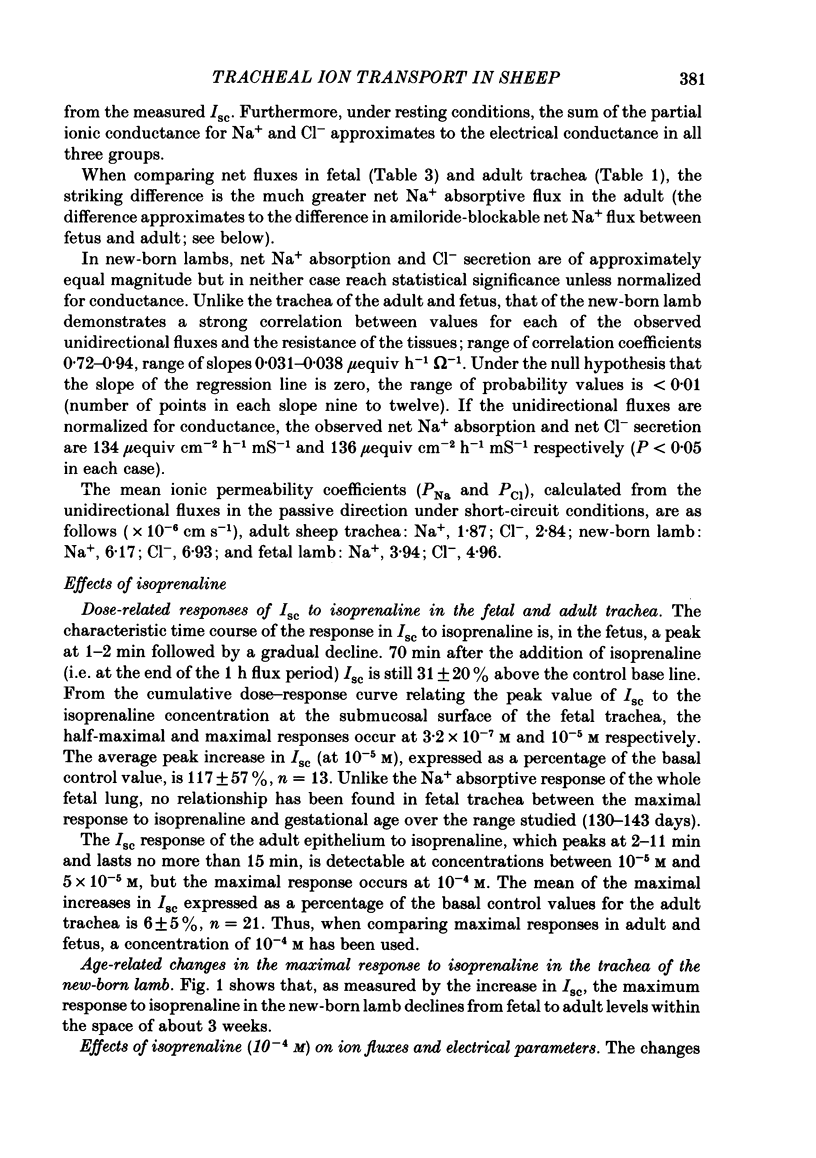
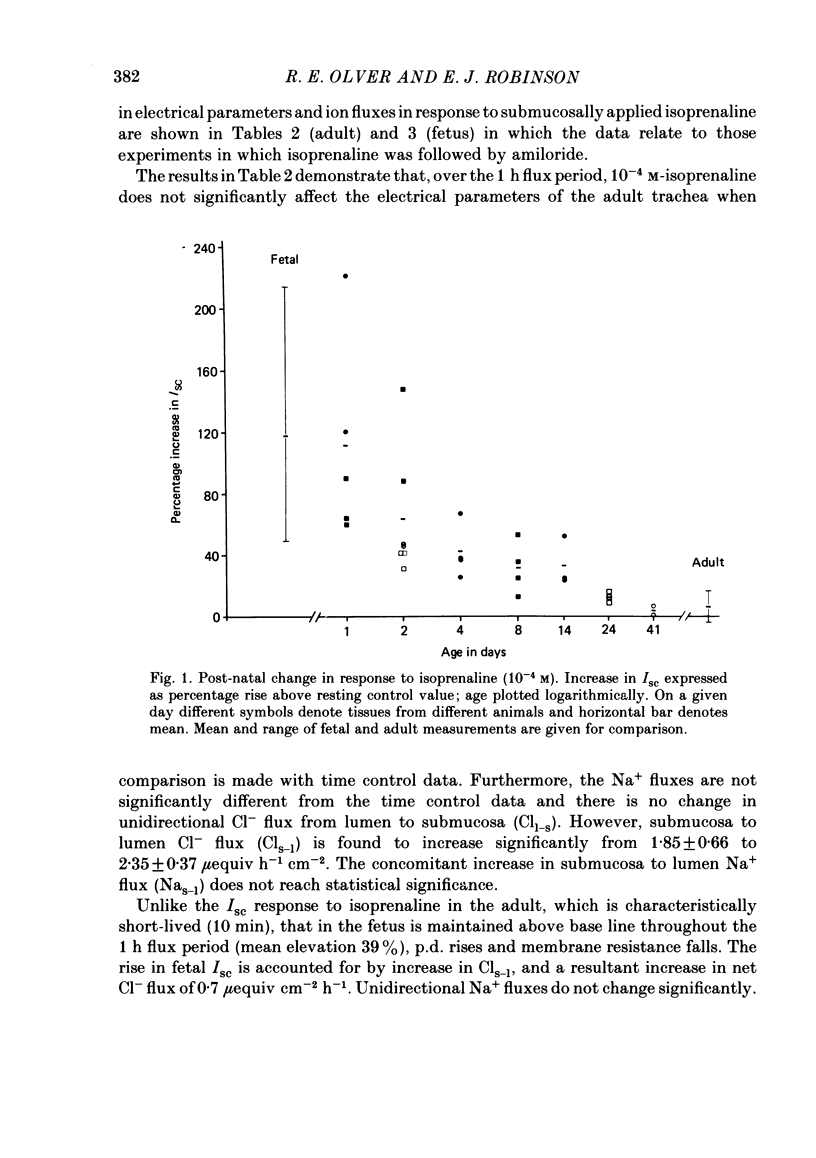
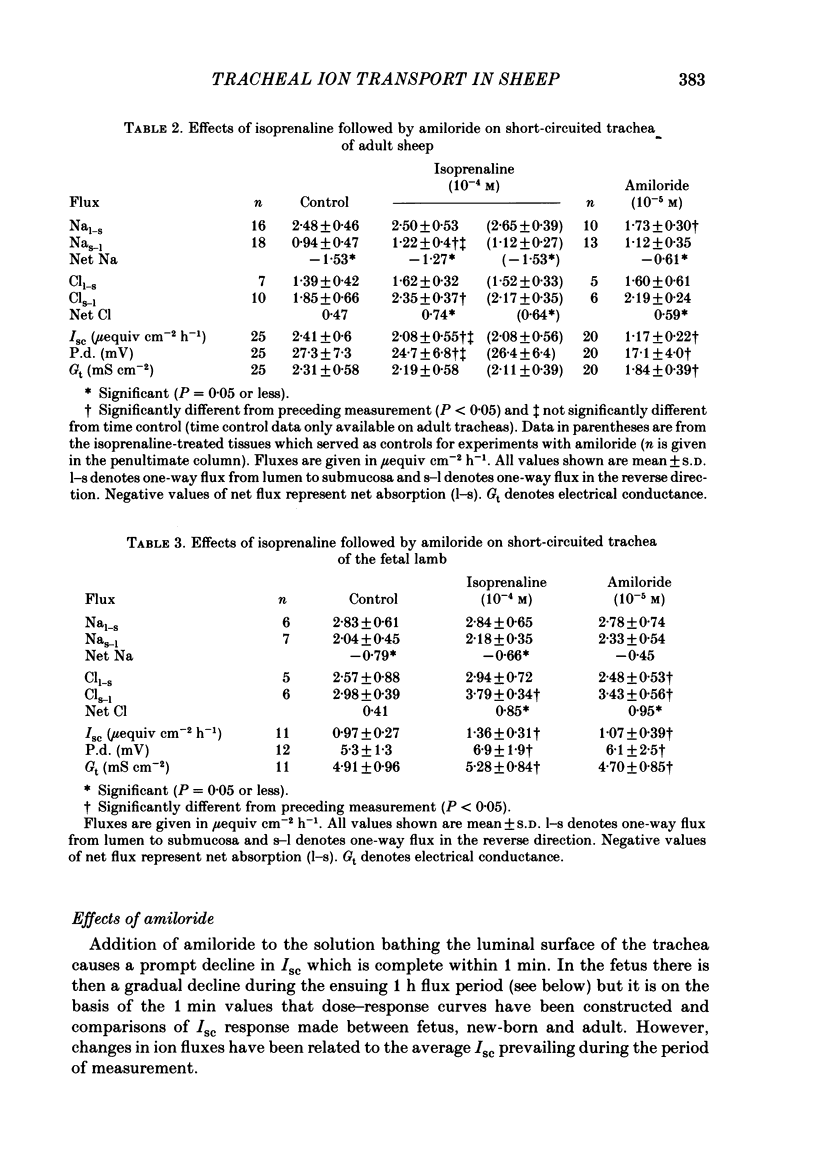
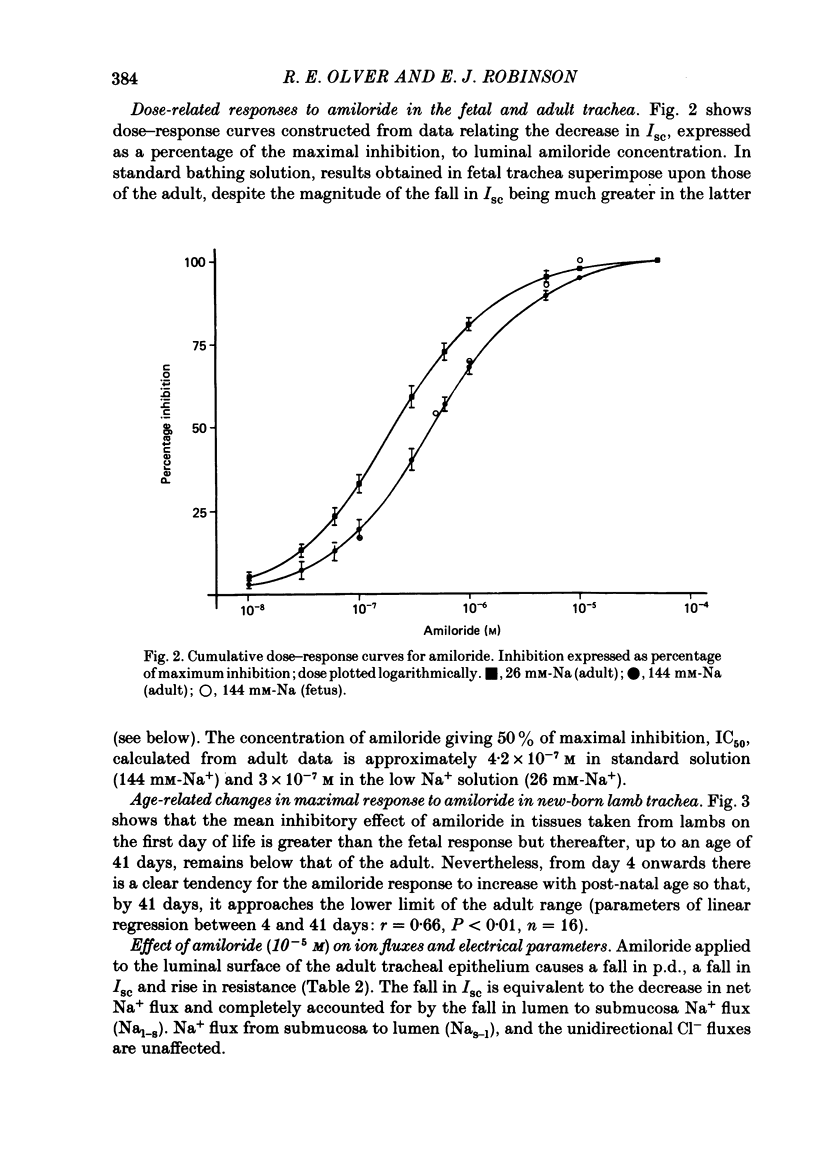
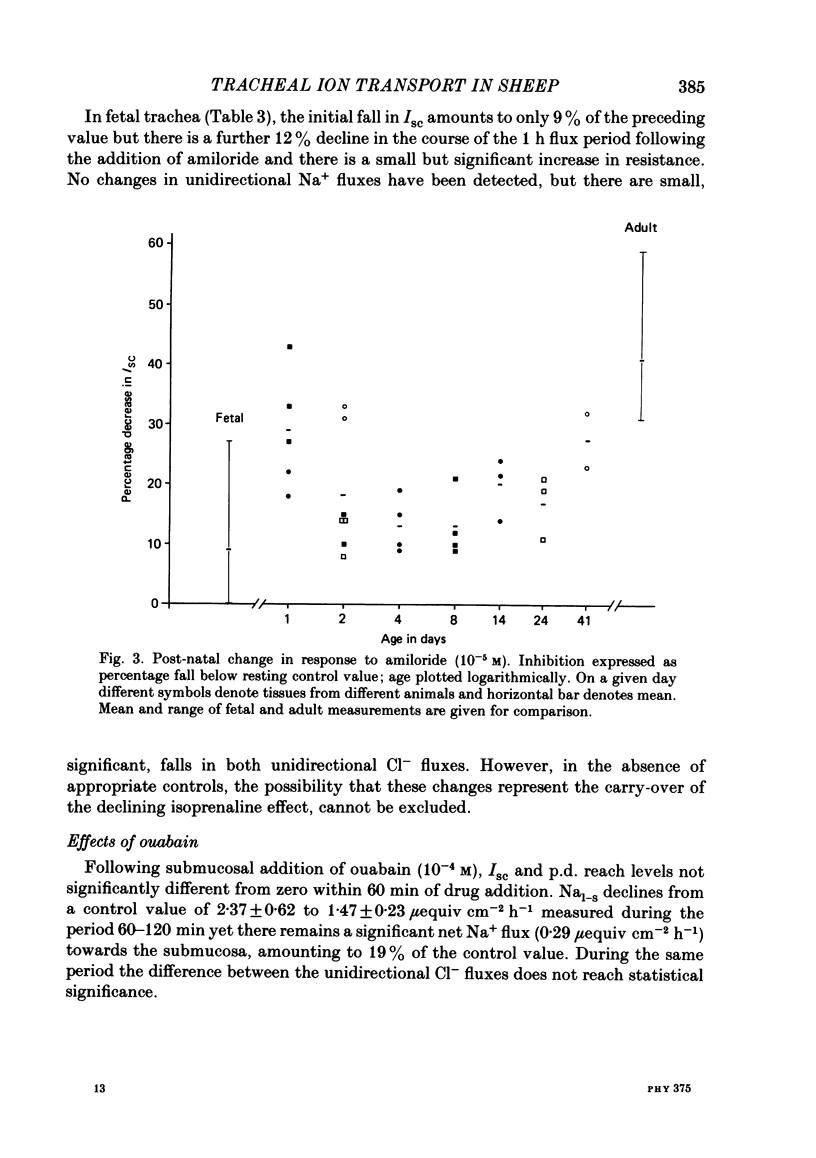
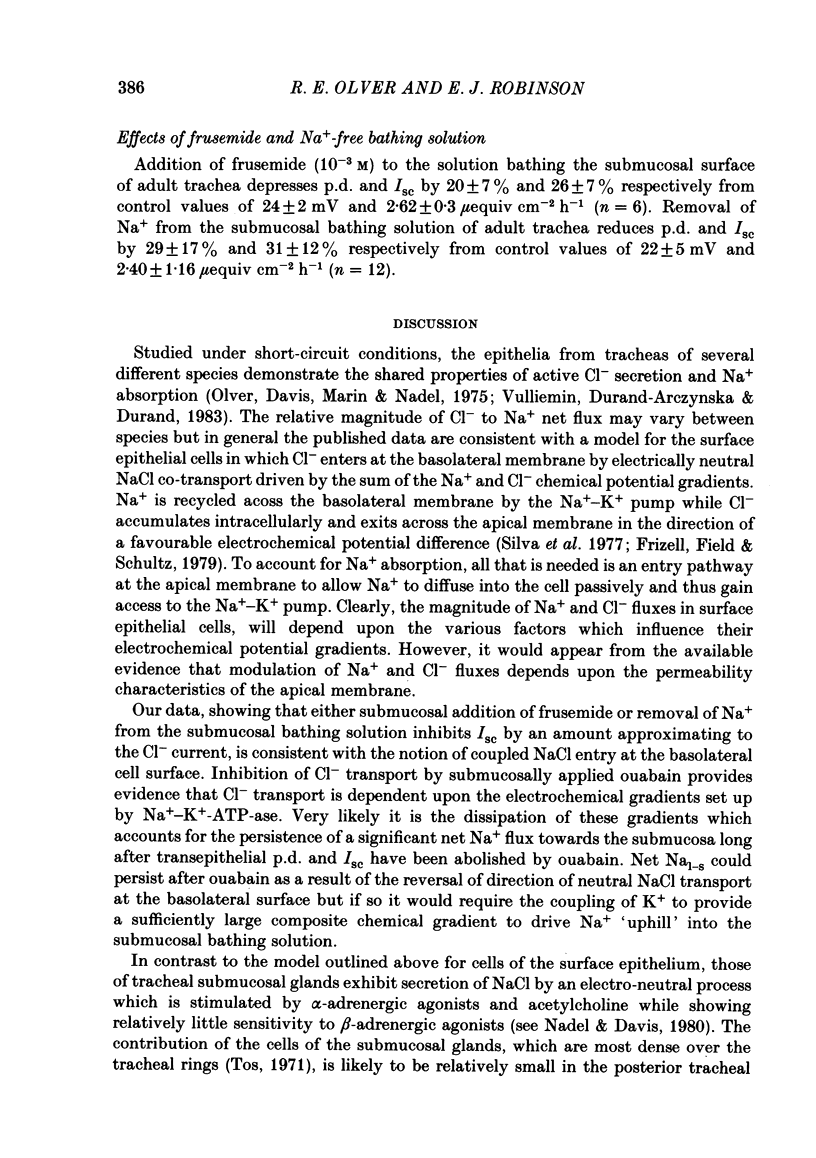
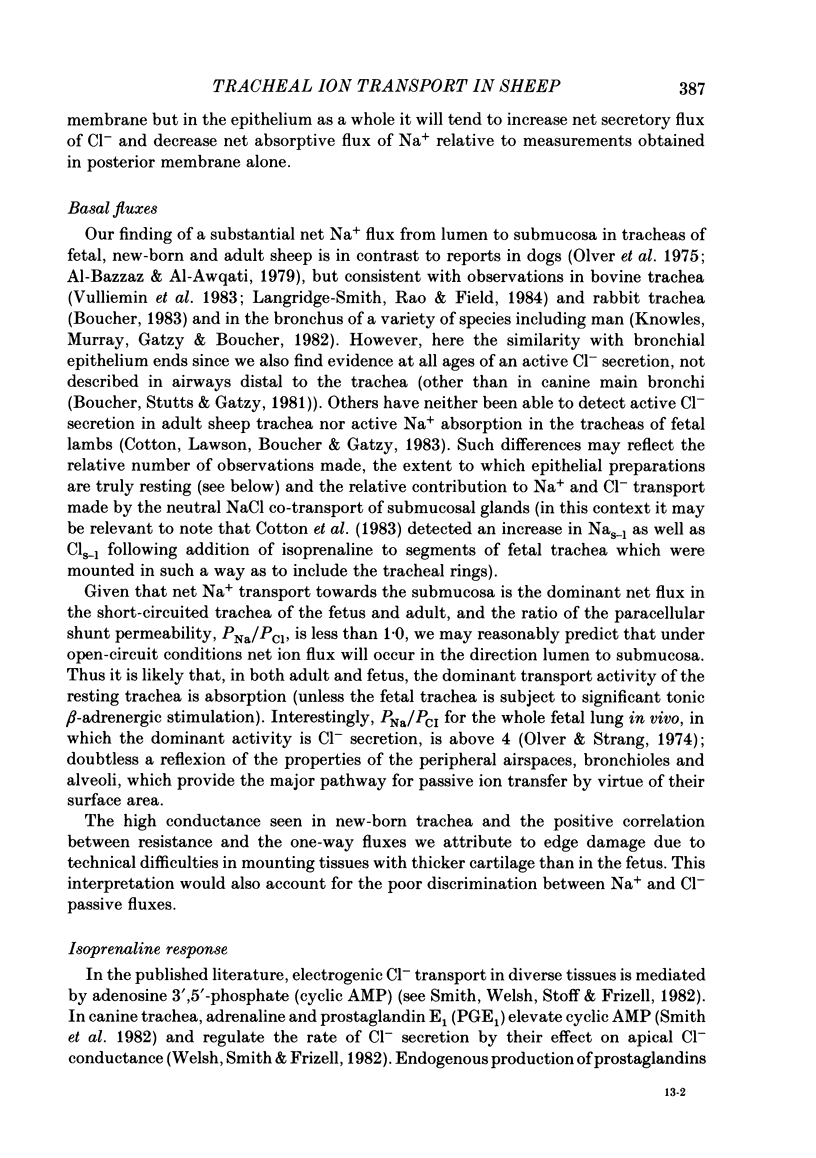
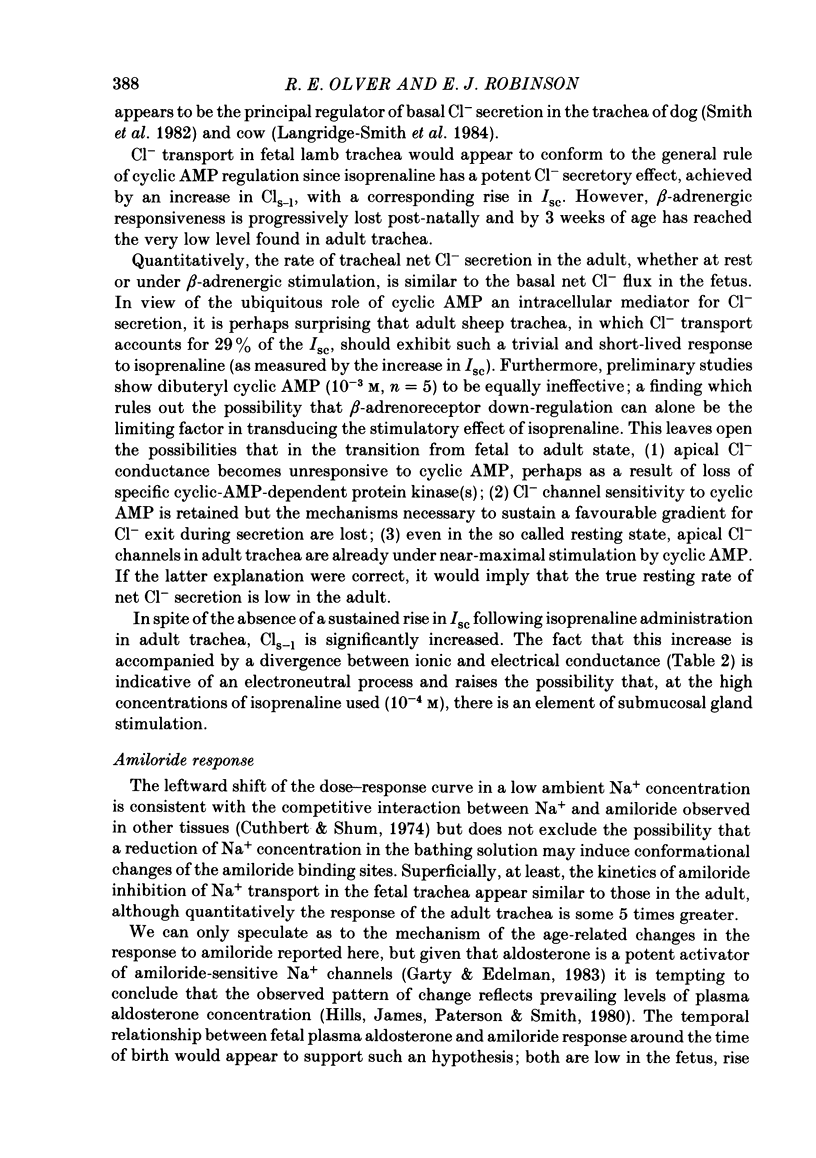
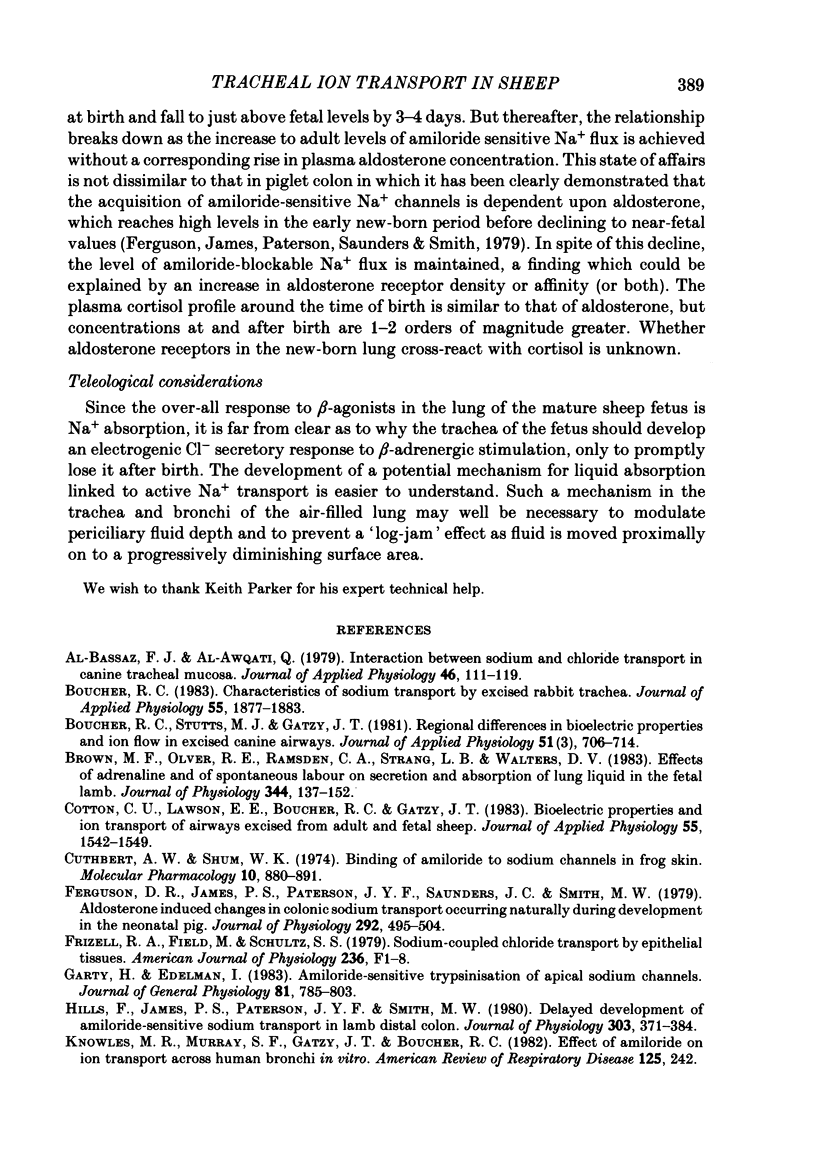
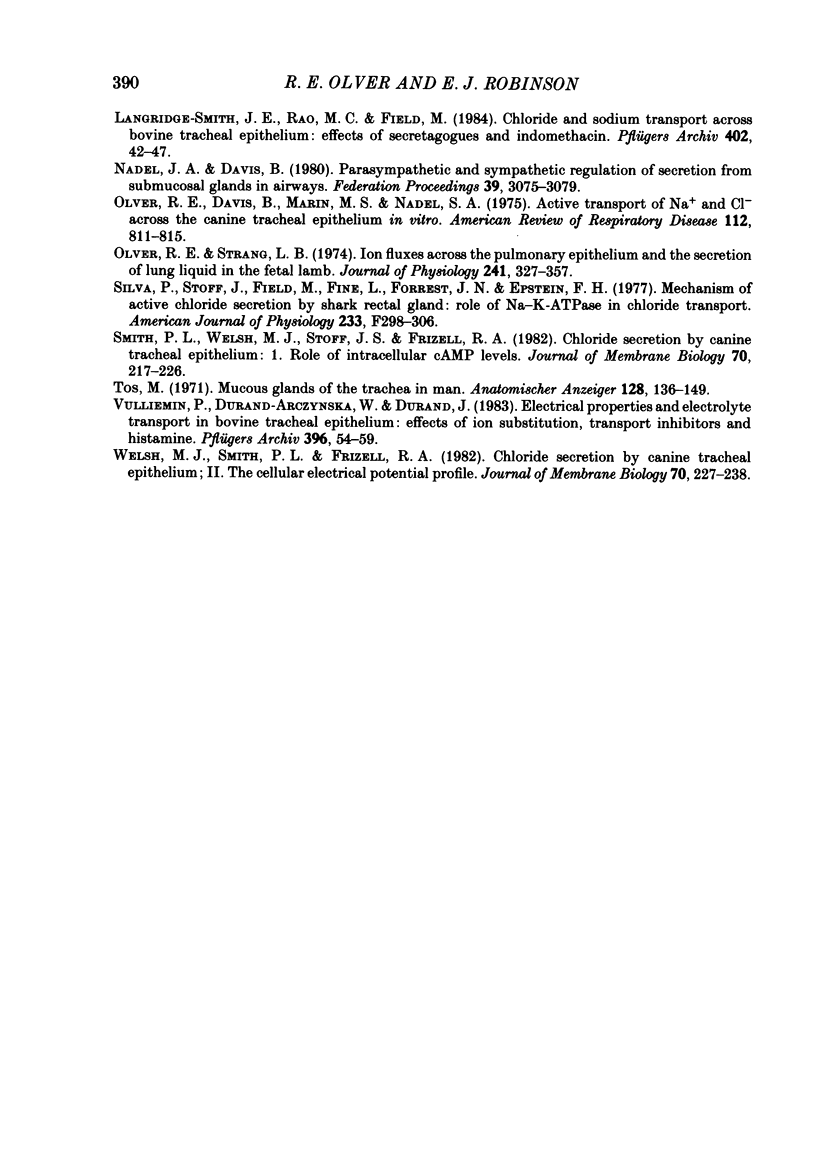
Selected References
These references are in PubMed. This may not be the complete list of references from this article.
- Al-Bazzaz F. J., Al-Awqati Q. Interaction between sodium and chloride transport in canine tracheal mucosa. J Appl Physiol Respir Environ Exerc Physiol. 1979 Jan;46(1):111–119. doi: 10.1152/jappl.1979.46.1.111. [DOI] [PubMed] [Google Scholar]
- Boucher R. C., Gatzy J. T. Characteristics of sodium transport by excised rabbit trachea. J Appl Physiol Respir Environ Exerc Physiol. 1983 Dec;55(6):1877–1883. doi: 10.1152/jappl.1983.55.6.1877. [DOI] [PubMed] [Google Scholar]
- Boucher R. C., Stutts M. J., Gatzy J. T. Regional differences in bioelectric properties and ion flow in excised canine airways. J Appl Physiol Respir Environ Exerc Physiol. 1981 Sep;51(3):706–714. doi: 10.1152/jappl.1981.51.3.706. [DOI] [PubMed] [Google Scholar]
- Brown M. J., Olver R. E., Ramsden C. A., Strang L. B., Walters D. V. Effects of adrenaline and of spontaneous labour on the secretion and absorption of lung liquid in the fetal lamb. J Physiol. 1983 Nov;344:137–152. doi: 10.1113/jphysiol.1983.sp014929. [DOI] [PMC free article] [PubMed] [Google Scholar]
- Cotton C. U., Lawson E. E., Boucher R. C., Gatzy J. T. Bioelectric properties and ion transport of airways excised from adult and fetal sheep. J Appl Physiol Respir Environ Exerc Physiol. 1983 Nov;55(5):1542–1549. doi: 10.1152/jappl.1983.55.5.1542. [DOI] [PubMed] [Google Scholar]
- Ferguson D. R., James P. S., Paterson J. Y., Saunders J. C., Smith M. W. Aldosterone induced changes in colonic sodium transport occurring naturally during development in the neonatal pig. J Physiol. 1979 Jul;292:495–504. doi: 10.1113/jphysiol.1979.sp012867. [DOI] [PMC free article] [PubMed] [Google Scholar]
- Frizzell R. A., Field M., Schultz S. G. Sodium-coupled chloride transport by epithelial tissues. Am J Physiol. 1979 Jan;236(1):F1–F8. doi: 10.1152/ajprenal.1979.236.1.F1. [DOI] [PubMed] [Google Scholar]
- Garty H., Edelman I. S. Amiloride-sensitive trypsinization of apical sodium channels. Analysis of hormonal regulation of sodium transport in toad bladder. J Gen Physiol. 1983 Jun;81(6):785–803. doi: 10.1085/jgp.81.6.785. [DOI] [PMC free article] [PubMed] [Google Scholar]
- Hills F., James P. S., Paterson J. Y., Smith M. W. Delayed development of amiloride-sensitive sodium transport in lamb distal colon. J Physiol. 1980 Jun;303:371–384. doi: 10.1113/jphysiol.1980.sp013292. [DOI] [PMC free article] [PubMed] [Google Scholar]
- Langridge-Smith J. E., Rao M. C., Field M. Chloride and sodium transport across bovine tracheal epithelium: effects of secretagogues and indomethacin. Pflugers Arch. 1984 Sep;402(1):42–47. doi: 10.1007/BF00584830. [DOI] [PubMed] [Google Scholar]
- Nadel J. A., Davis B. Parasympathetic and sympathetic regulation of secretion from submucosal glands in airways. Fed Proc. 1980 Nov;39(13):3075–3079. [PubMed] [Google Scholar]
- Olver R. E., Davis B., Marin M. G., Nadel J. A. Active transport of Na+ and Cl- across the canine tracheal epithelium in vitro. Am Rev Respir Dis. 1975 Dec;112(6):811–815. doi: 10.1164/arrd.1975.112.6.811. [DOI] [PubMed] [Google Scholar]
- Olver R. E., Strang L. B. Ion fluxes across the pulmonary epithelium and the secretion of lung liquid in the foetal lamb. J Physiol. 1974 Sep;241(2):327–357. doi: 10.1113/jphysiol.1974.sp010659. [DOI] [PMC free article] [PubMed] [Google Scholar]
- Silva P., Stoff J., Field M., Fine L., Forrest J. N., Epstein F. H. Mechanism of active chloride secretion by shark rectal gland: role of Na-K-ATPase in chloride transport. Am J Physiol. 1977 Oct;233(4):F298–F306. doi: 10.1152/ajprenal.1977.233.4.F298. [DOI] [PubMed] [Google Scholar]
- Smith P. L., Welsh M. J., Stoff J. S., Frizzell R. A. Chloride secretion by canine tracheal epithelium: I. Role of intracellular c AMP levels. J Membr Biol. 1982;70(3):217–226. doi: 10.1007/BF01870564. [DOI] [PubMed] [Google Scholar]
- Tos M. K. Mucous glands of the trachea in man. Quantitative studies. Anat Anz. 1971;128(2):136–149. [PubMed] [Google Scholar]
- Vulliemin P., Durand-Arczynska W., Durand J. Electrical properties and electrolyte transport in bovine tracheal epithelium: effects of ion substitutions, transport inhibitors and histamine. Pflugers Arch. 1983 Jan;396(1):54–59. doi: 10.1007/BF00584698. [DOI] [PubMed] [Google Scholar]
- Welsh M. J., Smith P. L., Frizzell R. A. Chloride secretion by canine tracheal epithelium: II. The cellular electrical potential profile. J Membr Biol. 1982;70(3):227–238. doi: 10.1007/BF01870565. [DOI] [PubMed] [Google Scholar]


